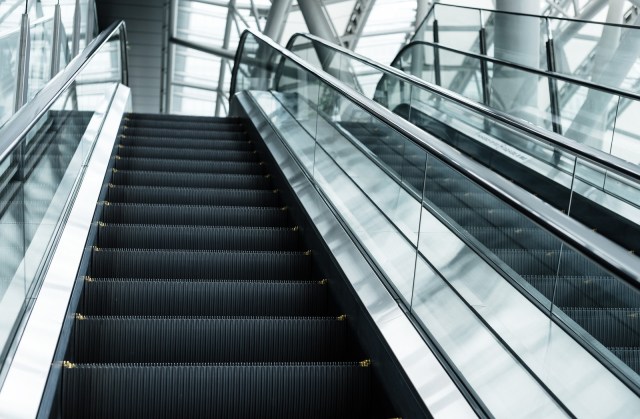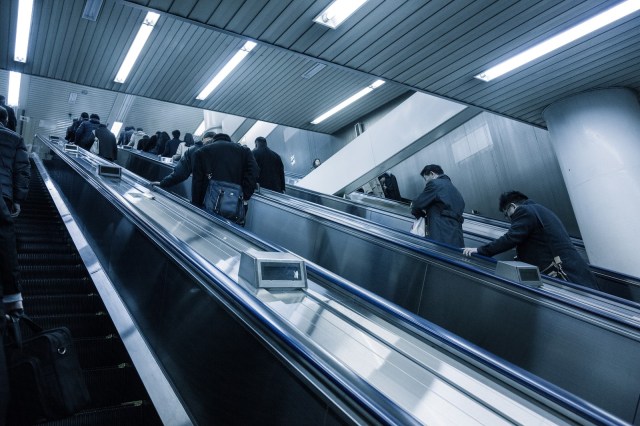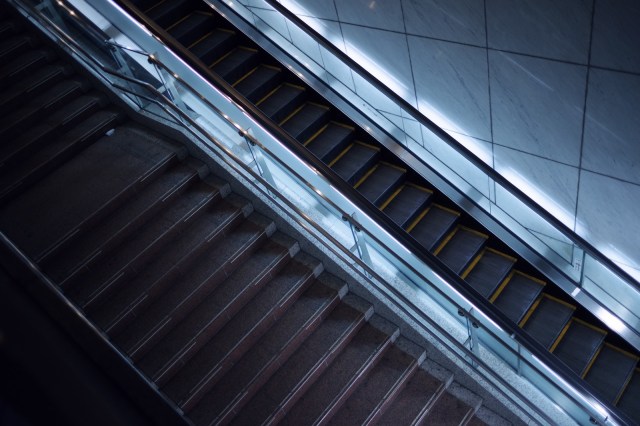Saitama officially forbids walking up and down escalators

They’ve become the first prefecture in Japan to do so.
Masahiro Kawase is a 48-year-old office worker who suffered a stroke six years ago and is paralyzed on his left side. However, in Saitama Prefecture custom dictates that everyone who rides an escalator stands on the left and walks – or in some cases runs – up the right side.

This makes what ought to be a normal commute for Kawase a harrowing experience. When boarding the escalator he must grab the right side handrail, steady himself, then slide over to the right. He also must do all this before others shove him and shout at him to get out of the way.
Now, however, Kawase and others like him may find some relief in Saitama’s new ordinance that was passed on 26 March to prohibit any movement while riding escalators. The ordinance, which will take effect next October, also requires places with escalators to put signage asking riders to refrain from walking or running on the machines.
▼ As seen in this news report, some make-shift signs have already gone up, but people are still running
While consideration for people like Kawase is one of the motivating factors for this ordinance, Saitama is also hoping to help curb the roughly 775 escalator injuries that happen a year in Japan, a little over half of which are caused by not standing still and holding handrails.
NHK spoke with Edogawa University Professor Emeritus Masakazu Toki, who said that the custom began during the bubble era when work efficiency took precedence over consideration for weaker people. “Manners are usually created through people’s behavior and thinking,” said Professor Toki, “so it’s a little disappointing that this time they need to be stipulated in an ordinance. However, there have been calls for this for over 10 years and little has changed, so I appreciate that this was established. The ordinance respects autonomy rather than surveillance and penalties.”

As Prof. Toki said, like with other ordinances that made headlines in the past, there are no punishments for violating them. The goal instead is to put the matter at the forefront and hope people take the time to consider it and change their behavior accordingly. That might not sound so effective, but in some cases it has been enough to create significant change in the past.
Most comments about the news generally support not walking on escalators, but some people took issue with making a law out of it in this way.
“Next time I see someone blocking the escalator, I’ll know they’re from Saitama.”
“Great job Saitama! If you want to walk, use the stairs.”
“I don’t know. This problem won’t be solved until it’s nationwide.”
“I don’t really understand ordinances. What do they do?”
“I’m always worried when riding with my child that someone will rush by and knock them over. I hope this spreads.”
“I admit I run up sometimes, but I still think this is a good idea. If you can run, then you can use the stairs.”
“Just make all escalators wide enough for one person and watch the problem disappear.”
Changing all of the escalators in Japan is a solution, but probably more long-term than some people want to see. However, a similar effect might come about naturally anyway.
With Japan’s aging society where already one in four women is over 70, the balance of escalator climbers versus escalator riders will surely continue to shift. As Prof. Toki mentioned, the culture of escalator-climbing came about naturally at a time when the number of young business people rose sharply. Now, as we enter the age where the population is dominated by the elderly, what’s considered appropriate on escalators could also change naturally.
Source: NHK, My Game News Flash
Top image: Pakutaso
Insert images: Pakutaso (1, 2)
● Want to hear about SoraNews24’s latest articles as soon as they’re published? Follow us on Facebook and Twitter!
Credit:

0 comments:
Post a Comment